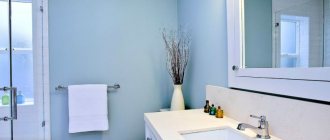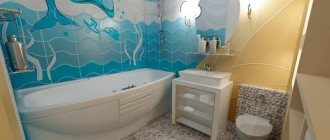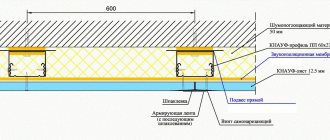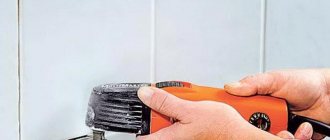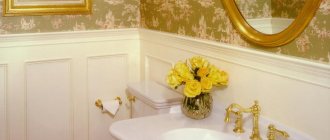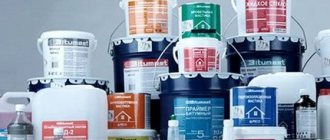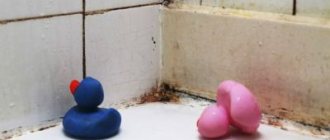When starting a bathroom renovation, many apartment owners encounter difficulties. You need to find the answer to a number of questions, especially if the repairs will be done on your own. One of the difficult questions that comes up is how to remove paint from a bathroom wall. It is necessary to remove old paint before starting new wall cladding. To prevent the process from being delayed, you need to study in advance all the effective options for how to remove paint from the walls in the bathroom.
Clean the surface of the walls in the bathroom from paint: what tools are needed
Based on the budget, preferences and capabilities of the person, the list of possible tools may be as follows:
- putty knife;
- axe;
- perforator;
- solvents;
- hammer and chisel;
- sander
Of course, this is not a complete list, and later in the article some of the main options will be discussed.
Using a hammer and chisel
One of the obvious and crude methods, which, however, demonstrates quite high efficiency.
Taking a chisel and a hammer, you can begin to beat off the layer, fragment by fragment. Advantages and disadvantages:
- the opportunity to save on chemicals;
- large time costs;
- the need for monotonous physical labor.
It is recommended to use several types of chisels depending on the surface characteristics.
Spare units are also a good idea, as the chisel may become dull during use. This option is best suited in situations where the wall is planned to be plastered in the future.
Using paint remover
No less monotonous, but less tedious is removing paint using a special caustic substance that etches it. After dipping the brush into the paint remover, you should go over the entire surface that needs to be cleaned. After waiting fifteen minutes, all that remains is to peel off the weakened layer with a spatula.
When carrying out work using paint cleaner, the following points should be observed:
- It is recommended to protect your hands with gloves.
- The room must be ventilated.
- Paint that does not come off the first time should be coated and scraped again.
Using a cord brush
Those who want to remove paint quickly, and without unnecessary movements, can use a cord brush that attaches to a drill.
In this case, the process will not take much time and effort.
All work is carried out using drill attachments and a respirator.
However, there are some hard-to-reach places, such as corners, that may remain unaffected.
When using this method, you should remember that the work will be accompanied by a large emission of dust. It will be necessary to prevent the spread of dust outside the bathroom, as well as to use personal protective equipment.
Grinding machine and diamond cutter
Using power tools is a modern and often reasonable solution. Among the undeniable advantages are speed and simplicity, and among the disadvantages are noise and dust.
A sander with a diamond cutter is an excellent solution for removing old paint from walls. This machine makes it possible to remove even paint that is applied directly to the concrete base.
Ax and warm water
It is acceptable to use an ax as an alternative. This tool is best suited when there are several thick layers of paint on the surface. To facilitate the dismantling process, the surface can be moistened with warm water, as is the case with old wallpaper.
The ax should be small and not sharp so that it is convenient to work with, but at the same time it does not pose a danger.
First, notches should be made along the entire plane, and only after that, between them, begin to remove the coating. This will greatly simplify the process, and in addition, despite the noise, the ax is in many ways superior to a spatula.
Methods of heat treatment of a paint layer
All three options for thermally treating paint on a wall surface are dangerous. You need to be careful in your work and know how to use tools.
Using an iron
If the paint on the wall has cracked and does not adhere well, then an iron is used as a tool for influencing temperature. Before removing paint from the walls in the bathroom, prepare a piece of thick food foil for a small section of the wall. Using an iron, the selected area is heated through the foil. After this, a spatula is used to remove the softened CM.
Using a hair dryer
The working mechanism of a hair dryer repeats the principle of working with an iron. The paint melts from the flow of hot air and is removed with a spatula.
Using a blowtorch
A blowtorch runs on kerosene or gasoline vapor. Fuel consumption: 1 liter on average for 30 minutes of work without stopping. The lamp is kept close to the wall. In this case, you need to make sure that the paint melts, but does not catch fire. The softened coating is easily removed.
When treating paint using thermal methods, the room is ventilated. When exposed to high temperatures, the dye emits an unpleasant odor. Areas with electrical wires and wooden inserts cannot be thermally treated.
How to remove old paint from bathroom walls
Removing old paint is not the most difficult task that you may encounter when renovating an apartment, and in particular a bathroom. However, this process also has its own characteristics.
Clean the water-based base
Water-based paint is usually used in rooms with high levels of humidity, which is the bathroom. However, despite the fact that water is one of the main components, nothing can be achieved by rinsing. It is recommended to generously wet the walls with plenty of warm water until the paint softens. To thoroughly and evenly distribute the moisture, you will need to use a roller and carry out these manipulations quite quickly, since the moisture dries out quite quickly.
Softened paint can be easily removed with one of the hard tools with a cutting edge.
Quickly remove emulsion from concrete walls
In the case of emulsion paints, to speed up the removal process, you can use the method of active wetting or electric tools. Chemicals in the form of various cleaners and solvents can also come to the rescue.
How to Clean Oil Paints
Oily compounds, like most others, are easily removed from the walls using a thermal method associated with the use of a hair dryer. A simpler option is a combination of warm water and a spatula.
How to remove old textured paint
Old textured mixture can be effectively cleaned from walls using the same methods as for emulsion.
Is it possible to remove decorative painted surfaces with appliqués?
In such a case, the issue is resolved in the same way as with any similar material. The choice of tools is made based on the characteristics of a particular room and the preferences of the master.
Required tools and materials
A few tips and instructions will answer the question of how to quickly and efficiently remove old paint. First of all, you need to take care of the following:
- Safety first! Prepare protective equipment. You should prepare a respirator and goggles to protect your eyes and respiratory tract from dust and sharp particles. Other equipment that may be needed includes an apron, gloves, hard hat and boots.
- To fix the problem on high walls or ceilings, you need to prepare a ladder. You should make sure that the ladder is strong enough to avoid falling. It must have strong crossbars.
- When repairing interior walls, you need to vacate the room. Items such as furniture and carpets need to be removed to protect them from dust particles. Windows, doors, baseboards can be protected with masking tape. Before removing a layer of old paint from the walls and ceiling in the bathroom, it is necessary to cover the floor and all plumbing with plastic wrap.
- Before removing annoying paint from the walls under the tiles, you should take care of the flow of fresh air. It is advisable to keep windows and doors open to ensure proper ventilation.
- Select suitable tools and materials.
- It is recommended to start cleaning old flooring in rooms or bathrooms with the simplest methods, then move on to more labor-intensive ones.
A wide range of tools may be needed for the job:
- Tools with a sharp edge: spatula, scraper, hammer, chisel, axe;
- Iron brush;
- Power tools: impact drill, hammer drill or grinder;
- Heating devices: technical hair dryer or blowtorch;
- Paint remover.
What mistakes are most often made?
The main point in the issue under consideration is that cleaning the walls should be done without fanaticism.
You just have to overdo it a little and instead of just a cleaned wall, you will end up with a broken concrete surface that will have to be strengthened, leveled and prepared. It is also worth remembering that the cleaning must be complete until the primary concrete surface is exposed.
The article discusses the question of in what cases it may be necessary to remove old paint in the bathroom, how this operation is carried out, and what tools are used.
Getting rid of old whitewash
Old whitewash can be removed in two ways - dry and wet.
Dry method of whitewash removal
You will need:
- respirator;
- Sander.
A lot of dust during work is a significant disadvantage of this method. All furniture must be removed from the room or wrapped in protective film. The advantage is that the sanding machine will quickly clean the walls of whitewash without damaging them.
USEFUL INFORMATION: What to choose, wallpaper or wall painting?
Wet method
Tools needed to remove whitewash:
- putty knife;
- bucket with water;
- sponge;
- brush.
In this case, the old whitewash will need to be washed away by generously wetting the walls with water using a sponge. The whitewash that has become pliable is removed with a spatula, and the remaining areas are treated with a brush and washed off with water to the base.
Features of working with water-based paint
Another important question is how to remove old water-based paint. To do this, follow a few rules:
- Before starting work, walk over the entire surface with warm water. Use a large roller. Exposure to liquid and temperature will soften the material. Let the water soak in for 10 – 15 minutes.
- Use a spatula to clean the coating. After the walls get wet, remove the paint using a tool. In this case, electrical equipment will be ineffective, so proven manual cleaning methods must be used.
- While you are cleaning the surface, the water may dry out. Periodically you will need to reapply the liquid to the walls. In addition, you can wet small areas, and after removing the paint base from them, move on to the next wall.
- Use protective film, paper or cloth to protect the floor. Old paint will fall down and can leave marks on the flooring that will be difficult to remove.
- If, after completing the main work, there are areas on the surface that cannot be cleaned manually, you can additionally go over the coating with a grinding machine. Be sure to protect your breathing and hands from dust while using it.
- In cases where the walls are covered with several layers of water-based paint, you can immediately use mechanical cleaning methods or chemical solvents.
Be sure to wet the paint with water
What not to do
It is not recommended to use the following products to remove paint:
- the thermal method using open fire is too fire hazardous;
- chemical remover - not used in unventilated areas.
Regardless of the method you choose to remove paint from walls, do not forget to use personal protective equipment. In any process you will be exposed to the following negative factors:
- dust;
- toxic substances;
- small particles of flying coating.
The most important thing to protect is the respiratory and visual organs.

